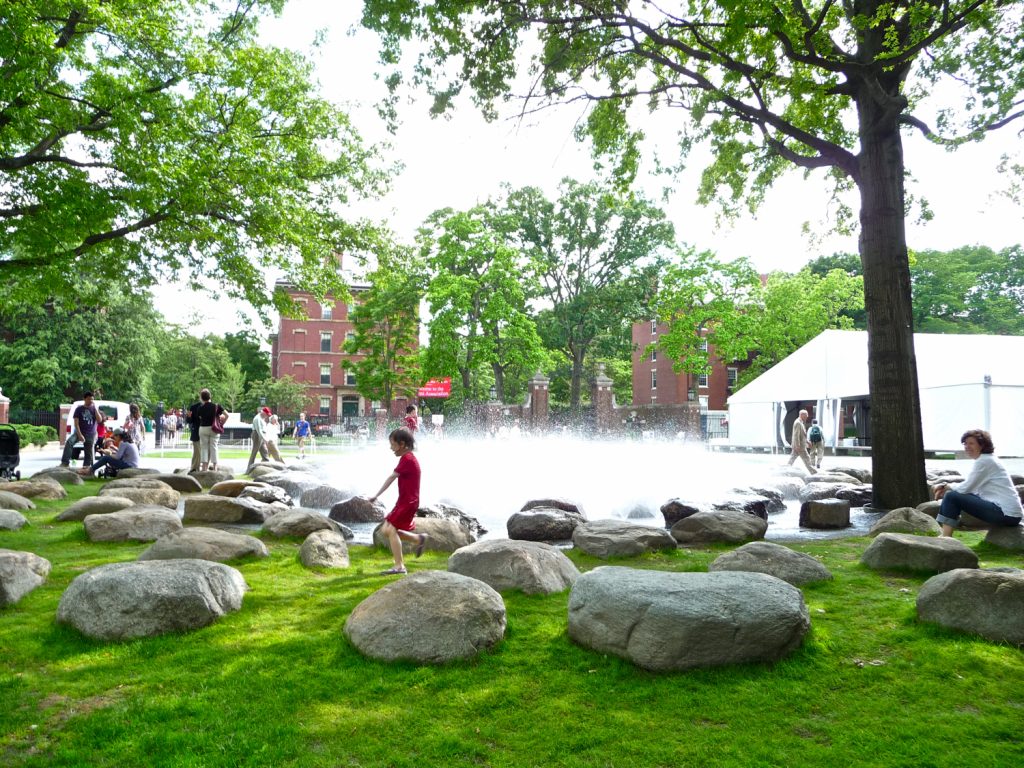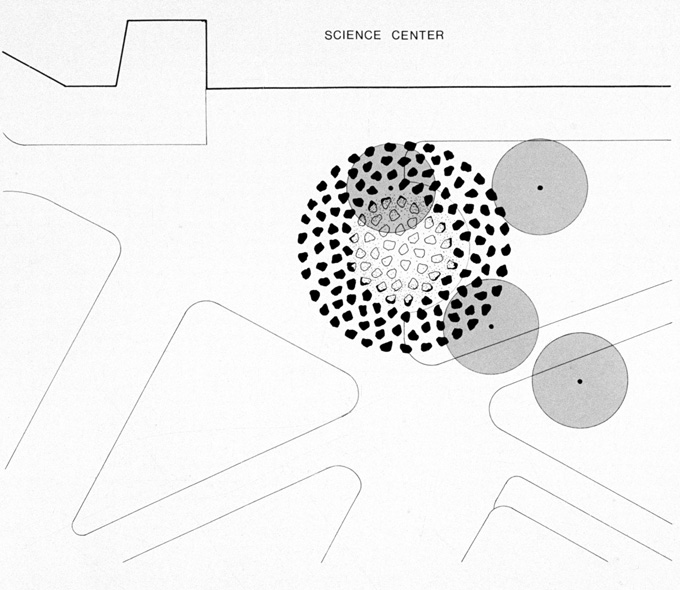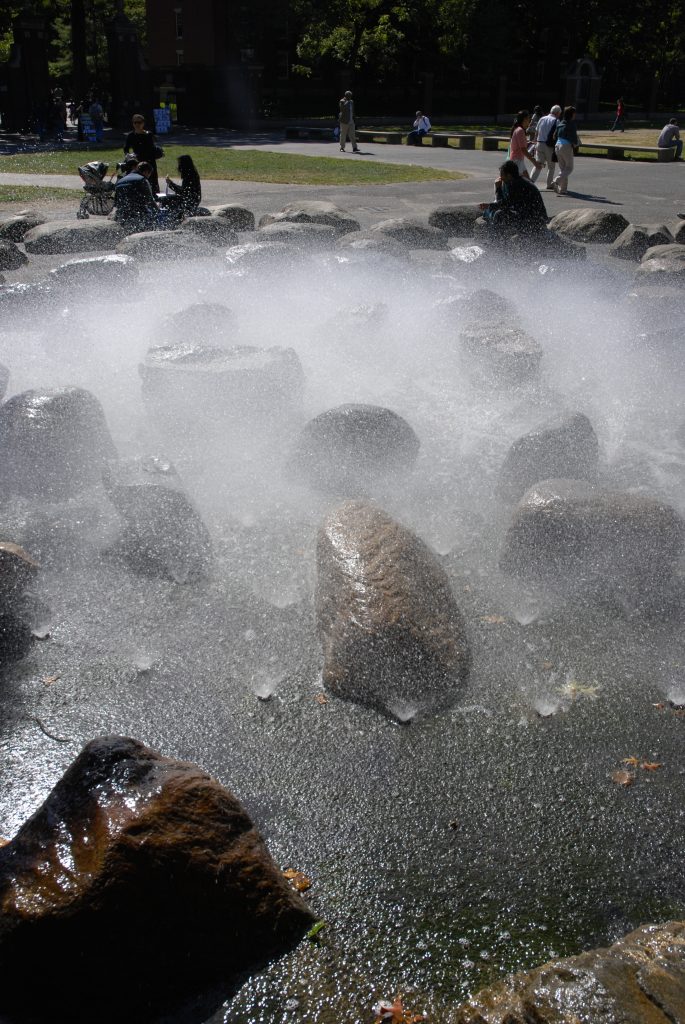Tanner Fountain, PETER WALKER, Contemporary, CAMBRIDGE, MA, 1984 AD
Written by Conner Cunningham

Image 1: Large ricks dispersed near the fountain

Image 2: Plan drawing of the Tanner Fountain
Designed by Peter Walker in 1984, Tanner Fountain is situated in a heavily trafficked intersection of Harvard University’s campus. The fountain is dissimilar to typical urban fountains, consisting of large basins of water and fanciful jets of water that shoot out of large ornamental centerpieces (image 1). While Tanner fountain consists of a centrally organized water feature (image 2), the water is a gentle mist that cools visitors and recirculates through the fountain (image 3). Typical urban fountains only allow visitors to interact with water at their edges. The mist from Tanner fountain directly cools visitors who occupy its central core.

Image 3: View of the mist fountain
Similar to Stonehenge, Tanner Fountain is simplistic in its organization and use of materials. The fountain is anchored by 159 granite boulders arranged in concentric circles around its misty core. Asphalt marks the interior of the fountain’s water feature (image 4), while the materiality changes to lawn farther from center for those that wish to stay dry. While Stonehenge uses large boulders to create structure and hierarchy around a central point, Tanner fountain scatters rocks in a decentralized field. The fountain encourages interactive use. Adults and children alike can walk, sit, or even play among the field of stones throughout the year, creating different ephemeral effects specific to each season.

Image 4: Rocks within the asphalt in mist
Media Attributions
- View of the Tanner FOuntain © Art Poskanzer is licensed under a CC BY (Attribution) license
- Tanner Fountain Plan
- Detail View of Tanner Fountain © popofatticus is licensed under a CC BY (Attribution) license
- Detail View of Tanner Fountain © Fred is licensed under a CC BY (Attribution) license
